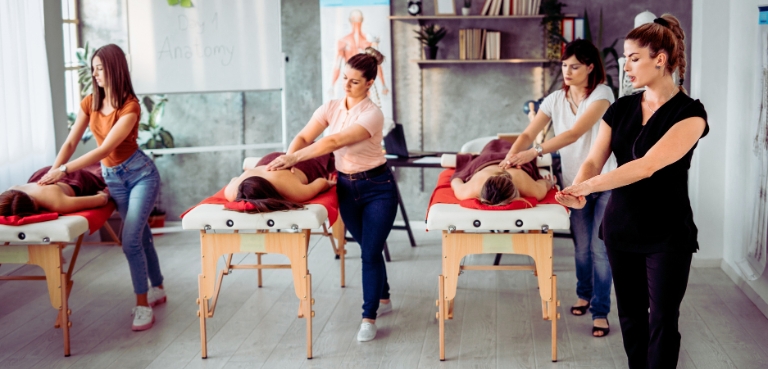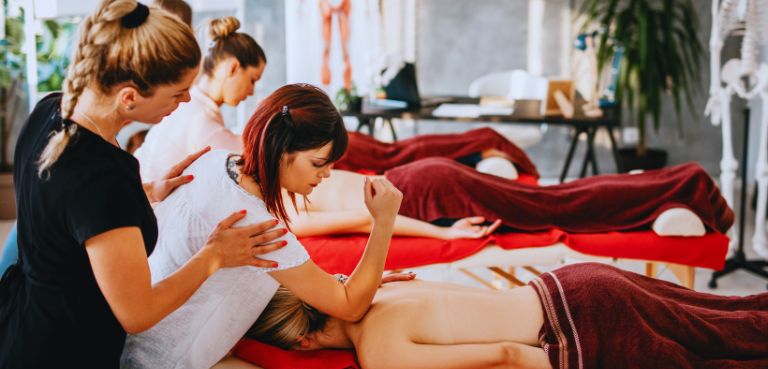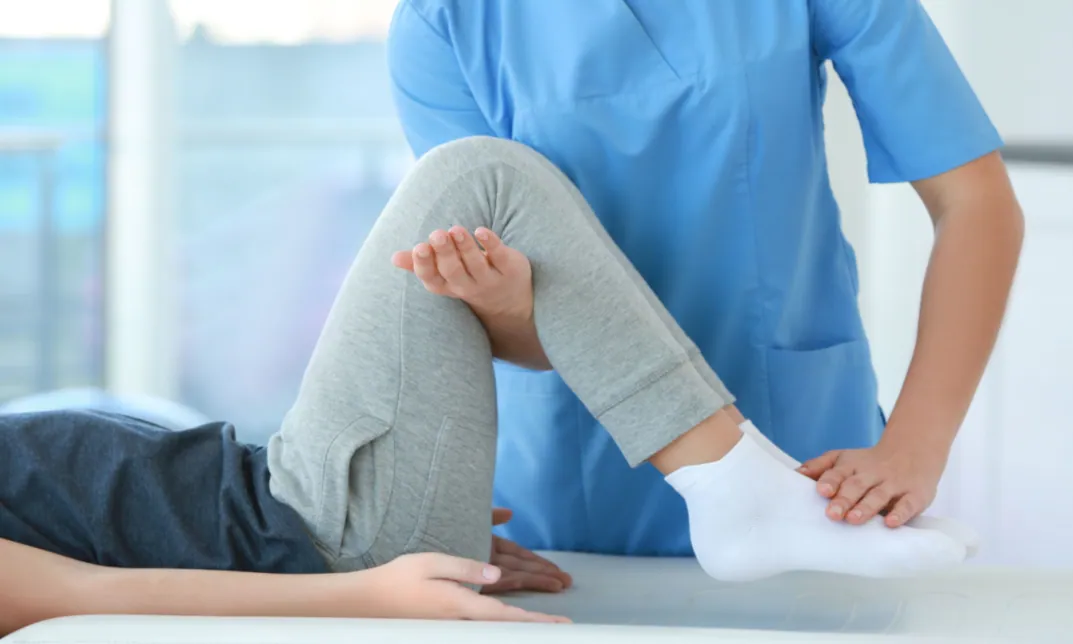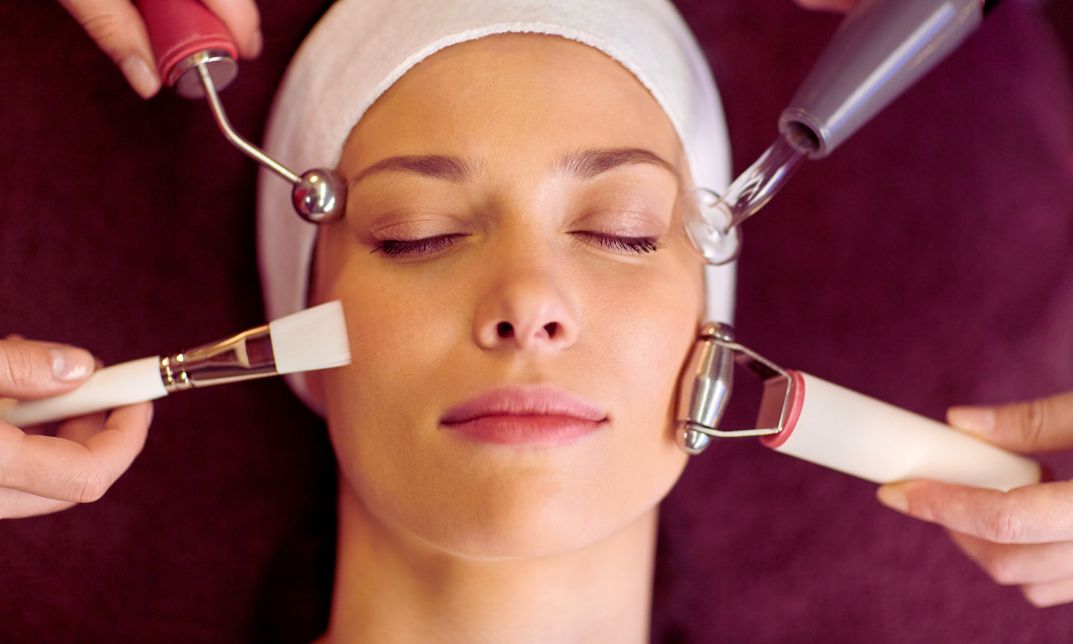No products in the basket.
“How do you become a massage therapist in the UK? It starts with learning anatomy, of course — but it goes deeper. You learn to listen with your hands and understand what words don’t say. Massage therapy isn’t just a profession; it’s an act of care, a form of connection. And in 2025, it’s also a growing and rewarding career path.
The wellness industry is growing fast. People want more than pills and quick fixes. They want healing. They want touch that’s grounded, gentle, and skilled. If you’ve ever felt drawn to meaningful work — work where your hands help people feel human again — massage therapy might be your calling.
Why Choose Massage Therapy Right Now?
People are stressed. Hours at desks leave their backs aching. Their minds are overwhelmed, and sleep doesn’t come easy. They’re looking for relief—and many are turning to massage therapy. This isn’t just a passing trend; it’s a meaningful shift in how we care for ourselves.
Massage helps with pain, anxiety, recovery, and even grief. It brings calm to a world that doesn’t stop spinning. Therapists get to witness real change in their clients. You’ll help people move again. Breathe again. Heal.
The career itself is also flexible. You can work for yourself or join a clinic. You can travel with your table or work from a quiet treatment room. Wherever people are, your skills will be needed.

How Do You Become a Massage Therapist
Start With the Right Qualification: Level 3 Diploma
The first thing you’ll need is a Level 3 Diploma in Massage Therapy. This is the industry’s basic professional standard. Without it, you can’t legally or ethically work on clients in a paid capacity.
This qualification covers:
- Human anatomy and physiology
- Swedish massage techniques
- Client care and communication
- Professional conduct
- Health and safety
Courses are usually between 6 to 12 months, though there are shorter, more intense options that run for 3 months. What matters most is that the course includes practical hours — because real learning happens through touch.
Trusted providers include VTCT, ITEC, and NVQ (offered through Focus Awards). Just make sure the course is Ofqual-regulated. That means it meets UK education standards and is respected throughout the industry.
Do You Need GCSEs?
Most Level 3 massage courses ask for GCSEs in English and Maths in grades 9–4 (A*–C under the old system). A background in Biology or PE can also be helpful, but it’s not required.
If you don’t have the right GCSEs, don’t panic. Some colleges offer alternative entry paths. You might take a short bridging course or use work experience as proof of readiness. The important thing is to ask the course provider. There’s more than one way into this field.
Beyond Level 3: Higher Massage Qualifications
Once you finish Level 3, your learning doesn’t have to stop. In fact, many therapists go on to study Level 4 or even Level 5 diplomas. These give you the tools to treat more complex conditions and work in more advanced settings.
A Level 4 Diploma often focuses on a speciality, like sports or remedial massage. You’ll learn to assess injuries, create treatment plans, and use more advanced techniques. This level is perfect if you want to support active people, injury recovery, or long-term pain management.
A Level 5 Diploma, often offered as a BTEC Professional Qualification, takes things further. You’ll explore soft tissue therapy, clinical reasoning, biomechanics, and palpation techniques. This level prepares you for complex cases and may include some academic work.
These higher levels suit therapists who want to work alongside physios, chiropractors, or in clinical rehab settings.
What Makes a Good Massage Course?
Not all massage courses are equal. The right one sets the tone for your whole career. Here’s what to check:
- Accreditation: Is it regulated by Ofqual? This guarantees national standards.
- Hands-on hours: Real-world experience is essential.
- Trainer experience: Skilled, working professionals make the best teachers.
- Student support: Ask about post-course help. Do they support job hunting or setting up a practice?
Avoid jumping at the cheapest or fastest course. Massage is hands-on, heart-first work — and it deserves solid training.

Exploring Specialties: Where Will You Take Your Skills?
Once you build your foundation, you can specialise. Picking a niche not only makes you stand out — it lets you focus on the type of healing that matters most to you.
Here are a few popular paths:
- Sports Massage: Support athletes, manage injuries, and improve performance. A common route is Level 3 Sports Massage, followed by Level 4.
- Deep Tissue Massage: Help clients with long-term muscle tension. This technique works through the deeper layers and requires good body mechanics and strong palpation skills.
- Indian Head Massage: A calming treatment for stress, headaches, and neck pain. Often done seated, it’s perfect for office workers and clients who carry tension in their upper body.
- Hot Stone Therapy: Use heated stones to relax muscles and allow deeper work. Clients love the warmth and the calm it brings.
- Aromatherapy Massage: Combine massage with essential oils. You’ll learn oil properties, blending, and safety — it’s perfect for emotional and physical healing.
After each speciality, you’ll return to your base skills — anatomy, pressure, and presence. But you’ll now have more tools, more options, and a clearer sense of your style.
Staying Safe: The Essentials Beyond Training
Being a great therapist means keeping yourself and your clients protected. That includes a few practical steps:
- Insurance: You’ll need both public liability and professional indemnity insurance. If you ever hire staff, you’ll also need employers’ liability cover (this is a legal requirement).
- First Aid: Most insurers and professional bodies expect you to have up-to-date first aid certification. Basic life support and emergency response are essential. Renew every three years.
- Local Licensing: Many local councils require a licence to provide massage as a “special treatment.” This might include fees or inspections. Requirements vary, so check your local authority’s website. Not having the right paperwork can lead to fines or even being shut down.
Learning Never Stops: CPD and Career Growth
Massage therapy is a lifelong learning path. The best therapists stay curious. They keep growing.
CPD — continuing professional development — is a big part of this. Many professional bodies, including FHT and CNHC, require CPD hours to keep your membership active.
What counts as CPD?
- Short courses and workshops
- Advanced techniques (like cupping or kinesiology taping)
- Business and marketing training
- Webinars, journals, or research
- First aid refreshers
CPD helps you stay sharp, build new skills, and expand your services. It also keeps your passion alive.
Where Can You Work?
Massage therapy opens doors. Once you’re trained and insured, you can explore many paths.
You might:
- Work in a wellness clinic, spa, or physiotherapy centre
- Set up your own business, either from home or in a rented space
- Offer mobile massage and visit clients in their homes
- Work in sports clubs, gyms, or with athletes
- Travel the world on cruise ships or resorts
- Work alongside medical teams in hospitals or hospices
Many therapists start part-time, then build their business gradually. You don’t need to have it all figured out on day one.
Trends in 2025: The Future of Massage Therapy
Massage is growing — not just in demand, but in depth.
More therapists are integrating technology into their work. Online booking systems are now expected. Some use digital assessment tools or percussive massage devices.
Personalised care is also on the rise. Clients don’t want cookie-cutter treatments. They want someone who listens, adapts, and creates a session just for them.
There’s also a stronger link between massage and mental health. Touch calms the nervous system. Therapists who understand emotional needs — and know when to refer — are valued more than ever.
Mobile services are booming. Clients want convenience. If you’re willing to travel with a table, you can tap into a whole new market.
And above all, there’s a growing push for education and standards. Higher-level qualifications, more CPD, and ethical practice help protect the public and elevate the profession.
What’s Next? Your First Step Starts Now
So, how do you become a massage therapist? Becoming a massage therapist is a beautiful, grounded career. It offers freedom, purpose, and connection.
If you’re ready to begin, start with these steps:
- Look for a Level 3 Ofqual-regulated course from VTCT, ITEC, or Focus Awards.
- Ask about hands-on training and post-course support.
- Check if you meet entry requirements (or ask about alternatives).
- Get in touch with a professional body like FHT or CNHC.
- Make sure you understand local licensing rules.
- Stay open to lifelong learning — this is just your first chapter.
In Closing: Healing Begins With Presence
This isn’t just a career. It’s a calling. It’s about knowing when to press and when to pause. And about listening to what the body says when the mouth is quiet. It’s about showing up — fully, honestly, and with care.
Massage therapy invites you to bring your whole self to your work. And in return, it offers something few jobs do: the chance to truly help. Your hands can bring healing. Your presence can bring peace.
Feel called to this work? Begin your journey with Training Tale’s Level 3 Certificate In Sports Massage Therapy course. Learn to heal with heart and hands.





